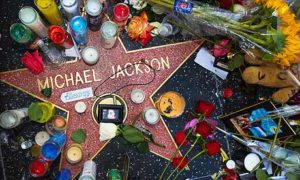When Michael Jackson Died
 One June winter evening several years ago in São Paulo, Brazil, I was at the lobby of our JeffreyGroup office waiting for our local managers to join me for dinner. One of them told me she had just seen on her phone someone posting that Michael Jackson had died. At first, I was sure it was a hoax, but then I watched as the entire world — every country, every generation, every demographic — mourned his death over the next weeks.
One June winter evening several years ago in São Paulo, Brazil, I was at the lobby of our JeffreyGroup office waiting for our local managers to join me for dinner. One of them told me she had just seen on her phone someone posting that Michael Jackson had died. At first, I was sure it was a hoax, but then I watched as the entire world — every country, every generation, every demographic — mourned his death over the next weeks.
And that got me thinking: will there ever be another musical talent as familiar worldwide and celebrated as Michael Jackson? As technology has totally disrupted our mass-media world and insulated everyone in the information cocoons of their choosing, will it be possible again for one entertainer to be known as well as Michael Jackson? Someone that most teenagers in China know as well as most grandparents in Mexico?
In an earlier blog, I wrote about some of the changes I’ve noticed in our industry during my 36 years in the agency business. And, like I suppose nearly all of us in public relations, I’m also a keen observer of the media. In some ways, the growth and rise of the modern public relations business in the mid-20th century paralleled the ascendency of the mass media in American society. And now the business of PR, just like the mass media, is being challenged to rapidly evolve to meet the new ways people receive, share, and act on the news they receive.
One major impact on that has been the erosion of the influence and reach of mass media. Twenty years ago, if I woke up early enough and looked down the hallway of my Manhattan apartment building, there was a copy of The New York Times laid out in front of nearly all the 20 doorways between my apartment and the elevator. Today, only a handful are delivered to the building, and more than once I’ve had to call downstairs to remind the doorman to distribute them.
In the 1980s, 48 million Americans watched the nightly network news each evening; according to an analysis by Pew Research released last week. Those numbers dropped nearly in half to 24.5 million in 2013 — and 89% percent of young people aged 18 to 29 said they didn’t watch network news at all on a regular basis.
The media can still be enormously influential—there’s no doubt about that — a story in The New York Times about our agency earlier this month tripled the number of our website visitors for the week after it appeared. However, we’re all challenged by ways to reach broad swaths of millions of consumers when there’s so much content competing for their eyeballs every minute. This is the challenge for the next Michael Jackson: how to possibly capture the attention of so many diverse audiences, each insulated in their technologically-refined bubble.
These days, there are a lot more tools in our toolbox — since now the story that runs on the network news is just the beginning rather than the end of getting the information across to our target audience. Usually the strategic planning for that moment after the mass media spotlight is even more critical. Hopefully the audience will get the message — even the nearly nine out-of-ten under 30 who don’t watch network news — but it’s not going to be from sitting in front of the TV for a half-hour at 6:30.
Reprinted from PR Week February 5, 2014

